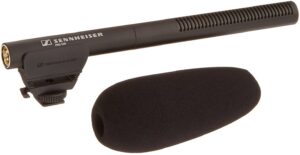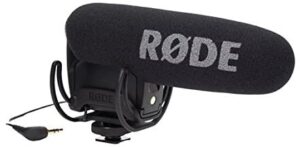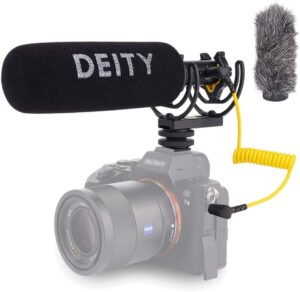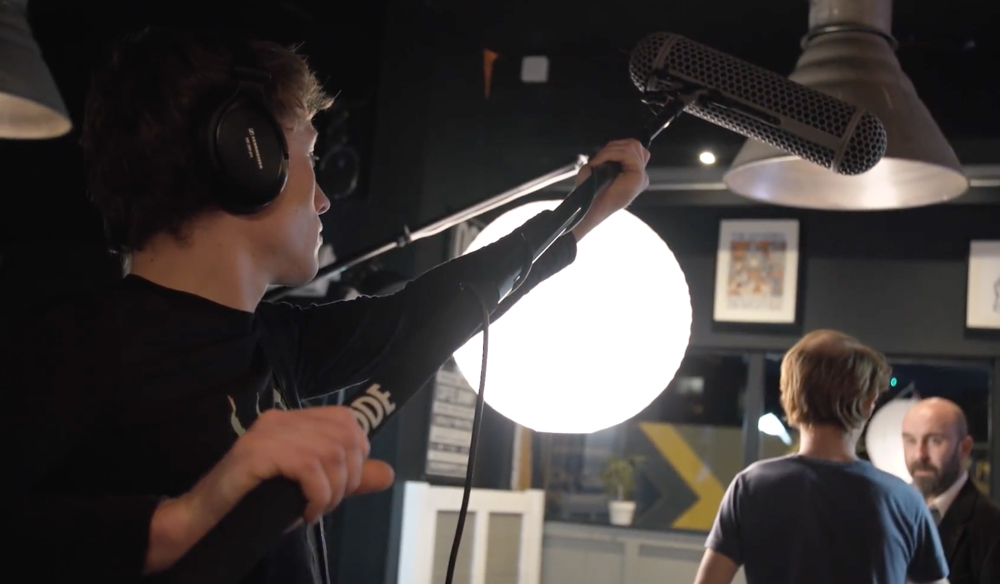The best boom mics for the film are used for capturing audio sounds when filming, and this is a common method of capturing audio sounds that are in vogue today. So the question is, how can you identify the boom mic that will work best for filming?
During filming, the microphone used for capturing audio sounds must stay well hidden. These microphones are called boom mics which we all know are attached to a pole and pointed downwards toward the person talking.
Field audio technicians, boom operators, and post-production mixers are people that are likely to work with a boom microphone. Interestingly, what works for one person might not work for another, and this tells you why you must carry out research that will help you find out what boom microphone will work for you.
Most people ought to know that microphones are not just the only instruments responsible for capturing clear audio sounds, but there are other factors involved that will help capture crystal clear sounds. They are;
- Microphone placement and technique
- Instrument
- Performer, whether it is a speaker or a musician
- The natural sound of the environment used
- Signal chain which includes a computer, interface, console, preamplifier, microphone cable
- Content which could be discussion, song, or otherwise
- Number of microphones used
Before shopping for a boom microphone, certain features make it perfect for filming. Here are some of the features that make a boom microphone great or ideal for filming.
Have You Seen This: Neumann TLM102 Review
Content Navigation
Features That Makes A Boom Microphone Perfect For Filming
Lightweight
You must select lightweight boom microphones as they can be held with ease when attached to a pole, and the weight of every boom mic, when attached to a pole, will affect the performance and comfort of the person holding the microphone.
Extreme Directionality
A high directional boom microphone remains the best choice for filming, and this is because it delivers when it comes to capturing a subject or talent’s clean sounds.
Boom microphones with unique axis rejection and extreme directionality will capture sounds from the microphone’s direction and not away from where the microphone points.
Shape
The shape of the boom microphone you settle for must perfectly fit a blimp style windscreen and a shock mount, and this will tend towards selecting a shotgun microphone because they are designed to fit a blimp style windscreen, shock mounts, and boom poles.
High Sensitivity
When shooting a film, you must use a boom microphone with high sensitivity. You will use a blimp and windscreen to shield the microphone from the subject and the microphone capsule, and the boom mic will be placed or held distances away from the subject.
Using a sensitive directional microphone will remove all of this stress, making filming easy and less stressful.
Extended And Flat Frequency Response
People itching to obtain natural sounds should go for a boom mic with flat and extended frequency response. This is crucial as it should filter out low frequencies rather than not having them in the mix.
Read This: Best Budget Stereo Amplifier
Best Boom Mics For Film – Buying Guide And Recommendation

When filming, you should position the boom mic inside a shock mount that will sit right on a pole. The microphone and shock mount are then protected using a protective filter screen or blimp. When using a boom microphone outdoors, it is essential that an additional screen be used, which is used to cover up the blimp’s outer shell. Shock mounts are a must-have when using a boom microphone.
If you are new to using boom mics, you might be wondering why shock mounts are compulsory when working with a boom mic.
This is because shock mounts help in the isolation of sensitive microphones from the boom operator and boom pole, which results in a massive cut down of mechanical noise that is likely or capable of affecting signals. On the other hand, Blimps are considered large protective shields, commonly found at the end of a boom pole.
The function of the blimp is to protect the shock mount and microphone physically, and it is also responsible for providing protection away from the wind that could affect the audio quality of any signal.
Therefore, blimps must be designed to be acoustically transparent because they are tasked with allowing sounds waves to travel through the capsule. It does this with little or no coloration.
The reason behind attaching a boom mic to a pole is to get it closer to the audio or sound source.
It does this and doesn’t show up in the frame, and being cross-compatible with cameras is a great feature of this phone. In addition, there are several boom microphones for filming that are extremely versatile, while others are precise and straightforward. So how do you find the best boom mic for filming?
This is one question that many people have yet to answer for a while, but we have brought you this guide to show you the best boom mics that will not disappoint when used for feeding.
Top 5 Best Boom Mic For Film Reviews
1. Sennheiser Pro Audio Wireless Microphone System (MKE600)

Designed by one of the most famous brands most microphone audio engineers or singers know, the Sennheiser Pro Audio wireless microphone system features an advanced design that makes it best suited for professionals.
Interestingly, there are other affordable versions of these microphones, but this microphone is known for its ability to cut down on side noise which you might not get from several other boom mics on the market.
It comes with several accessories that make the user get to work immediately after this microphone arrives, and this takes away the stress of going out to shop for accessories.
In addition, it comes with a shock mount and a windshield that combines to deliver a better sound quality than some other microphones in its category.
Specifications
- Brand – Sennheiser
- Item Weight – 15.2 Ounces
- Item Color – Black
Key Features
- Phantom battery powering
- Pronounces directivity
What We Like
- It is great for voiceover
- It delivers a smooth overall tone
- It is also reliable when trying to improve your video audio quality
What We Don’t Like
- It doesn’t sound clear when placed one foot away from the mouth.
2. Rode VideoMicPro Compact Directional On-Camera Microphone

This microphone is loved and used mostly by hobbyists, and finding out why they love this microphone is difficult. However, it is loved because it comes with a 1/2 inch capsule that delivers high fidelity and natural sounds, making it the best microphone not just for filming but for broadcasting.
Just like in the first microphone we mentioned in this guide, this high-quality microphone from Rode is designed to reduce side noise so users can obtain unaltered and crisp sounds.
Interestingly, combining the rode pole with this rode microphone will provide users with amazing results. We also want to point out its shock mount that gets rid of unwanted vibrations and rumbles by isolating the microphone from all of this noise.
Specifications
- Brand – Rode
- Item Weight – 3 Ounces
- Item Color – Black
Key Features
- 1/2-inch capsule
- 3.5mm connector
What We Like
- This microphone has a self-powered design
- It comes with a tighter pickup pattern
- Its shock mount eliminates unwanted noise and sounds
Cons
- It feels a little bit too big
3. Deity V-Mic D3 Pro Super-Cardioid Directional Shotgun Microphone

People shopping for a boom mic for filming on a budget will love the Deity-V D3 directional shotgun microphone, which is very affordable. However, being affordable doesn’t mean it is of low quality.
Picking up sounds from the direction it is pointing is what this microphone is designed to do, and it boasts of having a super-cardioid polar pattern that makes sure audible and clear sounds are delivered.
Focusing on the frame and eliminating surrounding noise is one of the reasons why filmmakers love this boom microphone, and having a lightweight build means it will not affect performance negatively.
In addition, it is built to last long as it features rugged and durable aluminum construction, and this type of construction makes sure it withstands being used under harsh conditions and environments.
It uses batteries to function, but it shuts down automatically to conserve battery when it is not being used.
Specifications
- Brand – Deity-V
- Item Weight – 5 Ounces
- Item Color – Black
Key Features
- Off-axis sound performance
- Low cut filters
What We Like
- It is very affordable
- It records and adjusts sounds perfectly
What We Don’t Like
- It failed in holding a charge
A factor you need to keep at the back of your mind when using a boom microphone is how close you will position the microphone to the speaker’s mouth or audio source. Close but not too close is a common term used in music, but it’s not going to be a problem for filming.
No matter what you need a boom mic for, it should be positioned as close to the speaker’s mouth as possible without appearing in the frame. Using the boom pole makes this very easy to accomplish, but it also depends on how many angles the filming is done from.
Conclusion – Best Boom Mics For Film
We hope you have been able to find the best boom mic for the film after reading through this guide, and one thing you will also need to look out for is the best microphone boom arm stands.
This is known for delivering more support when obtaining sounds. If you have noticed a film production in progress, you must have met a guy holding a pole or maybe a certain type of instrument.
These guys are not carrying a microphone on a pole for fun, but you need to understand that they are using one of the best instruments when it comes to filmmaking. However, any microphone can be a boom microphone because all it does is get attached to a pole, and nothing spectacular about it.
Anyone can adopt several booming techniques when filming, but the best method remains to hold this microphone around three to five feet away.

